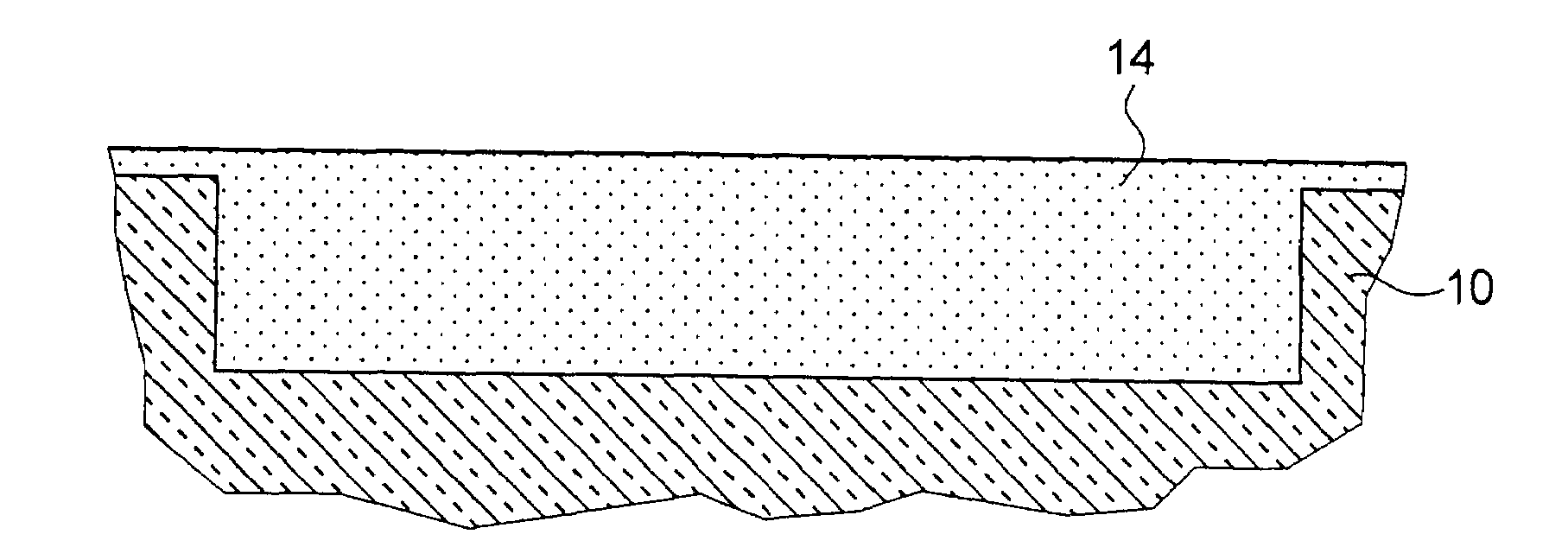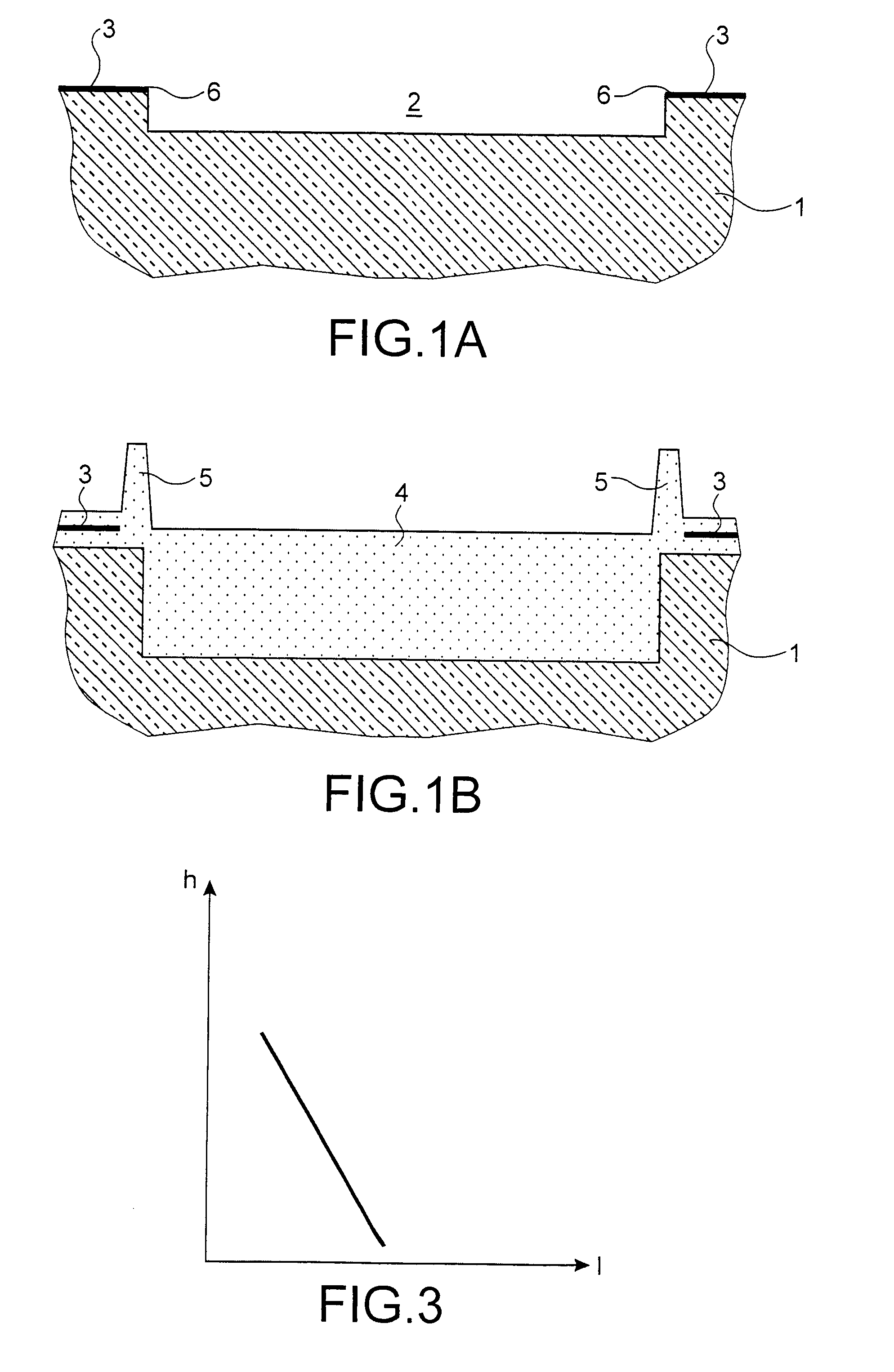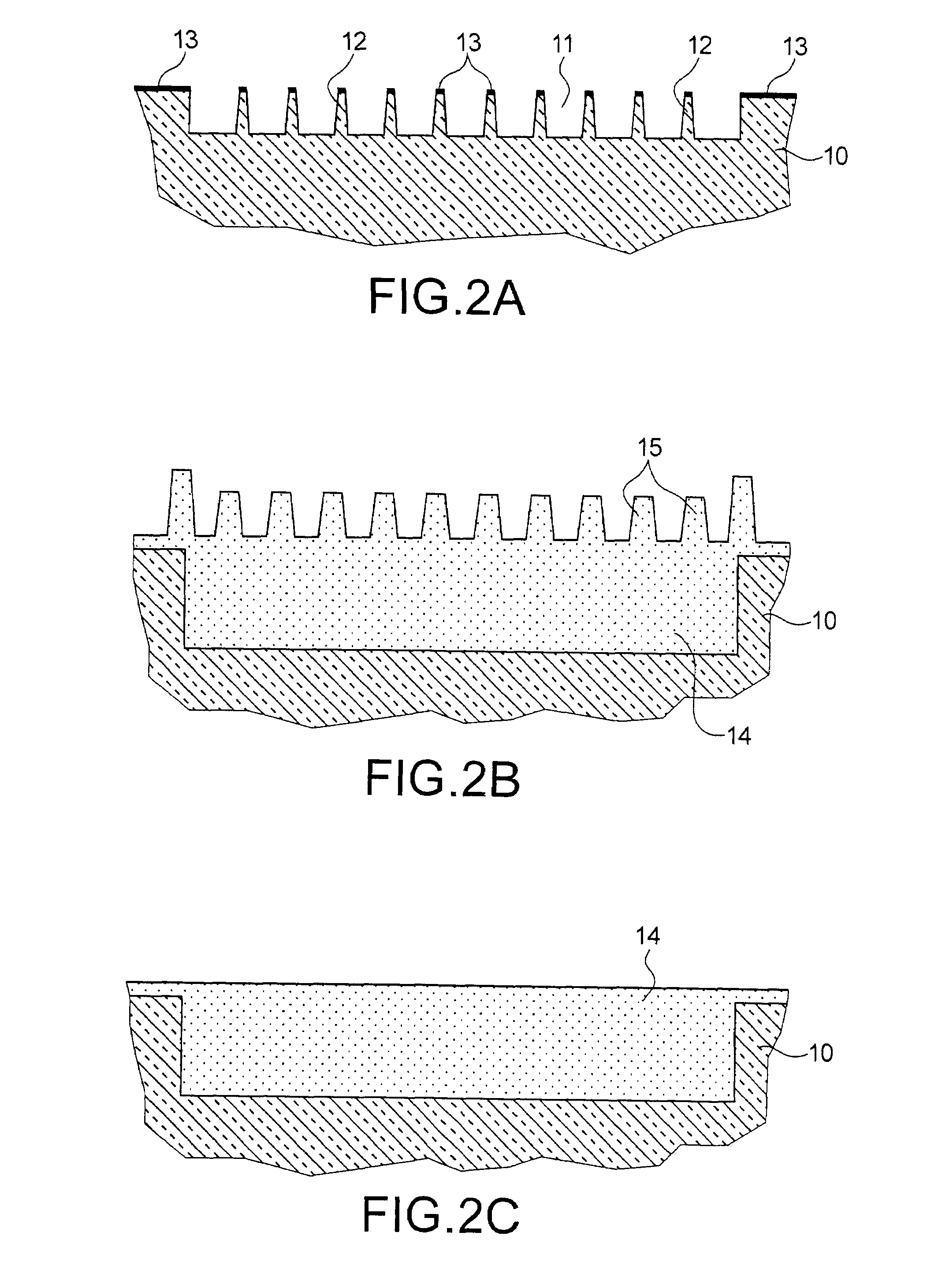Method of producing a mixed substrate
a technology of mixed substrates and mixed substrates, which is applied in the direction of basic electric elements, semiconductor/solid-state device manufacturing, electrical equipment, etc., can solve the problems of partial consumption of silicon nitride, non-homogeneous substrate technology, and partial consumption of mixed substrates. achieve the effect of reducing surface roughness and effectively plane all projections
- Summary
- Abstract
- Description
- Claims
- Application Information
AI Technical Summary
Benefits of technology
Problems solved by technology
Method used
Image
Examples
example application 1
[0040]On the surface of a silicon substrate, a cavity is etched. This cavity, referenced 11 in FIG. 2A, consists of a set of sub-cavities or alveoli separated by parts or partitions or walls (referenced 12 in FIG. 2A) rising from the bottom of the cavity. The cavity has a depth of 1.5 μm. The alveoli have a width of 100 μm. The separation partitions or walls of the alveoli are 2 μm thick.
[0041]3 μm of silicon dioxide is produced at the etched area, by thermal oxidation at 1100° C. under steam. The area of the substrate situated outside the future insulating block is protected by a film of silicon nitride in order to prevent its oxidation. It will then be observed that the separation walls of the alveoli are oxidised over a height depending on the initial width of these walls and the thickness of oxide generated. Advantageously, the dimensions of these walls (and in particular the thickness) will be chosen so that the walls are oxidised over their entire initial height. Protrusions 0...
example application 2
[0044]On the surface of a silicon substrate, a cavity is etched. This cavity (referenced 11 in FIG. 2A) consists of a set of sub-cavities or alveoli separated by parts or partitions or walls (referenced 12 in FIG. 2A) rising from the bottom of the cavity. The cavity has a depth of 1.5 μm. The alveoli have a width of 100 μm. The separation partitions or walls of the alveoli are 4 μm thick.
[0045]3 μm of silicon dioxide is produced in the etched area, by thermal oxidation at 1100° C. under steam. The area of the substrate situated outside the future insulating block is protected by a film of silicon nitride in order to prevent its oxidation. It will then be observed that the alveoli separation walls are completely oxidised over a height of 0.5 μm. Protrusions 0.7 μm high will also be observed vertically in line with these walls. At the edge of the cavity, the protrusions have a height of between 1 μm and 1.2 μm.
[0046]After polishing and surface preparation, this substrate can be assemb...
example application 3
[0047]On the surface of a silicon substrate, a cavity is etched. This cavity consists of a set of alveoli separated by walls or spacers rising from the bottom of the cavity. The cavity has a depth of 1.5 μm. The alveoli have a width of 100 μm. The alveoli separation walls are 2 μm thick.
[0048]The area situated outside the future insulating block is therefore covered with a film of silicon oxide obtained for example thermally, chemically or by dry method of the plasma or UV / O3 type, referred to as a pedestal film. The thickness of this film is less than 0.5 μm, preferably less than 50 nm and preferably again less than 20 nm. This film of oxide is protected by a film of silicon nitride intended to form a barrier to subsequent oxidation.
[0049]3 μm of silicon oxide is produced in the etched area, by thermal oxidation at 1100° C. under steam. It is then observed that the alveoli separation walls are completely oxidised over a height of 2 μm. Protrusions 0.8 μm high are also observed vert...
PUM
| Property | Measurement | Unit |
|---|---|---|
| width | aaaaa | aaaaa |
| width | aaaaa | aaaaa |
| width | aaaaa | aaaaa |
Abstract
Description
Claims
Application Information
 Login to View More
Login to View More - R&D
- Intellectual Property
- Life Sciences
- Materials
- Tech Scout
- Unparalleled Data Quality
- Higher Quality Content
- 60% Fewer Hallucinations
Browse by: Latest US Patents, China's latest patents, Technical Efficacy Thesaurus, Application Domain, Technology Topic, Popular Technical Reports.
© 2025 PatSnap. All rights reserved.Legal|Privacy policy|Modern Slavery Act Transparency Statement|Sitemap|About US| Contact US: help@patsnap.com



